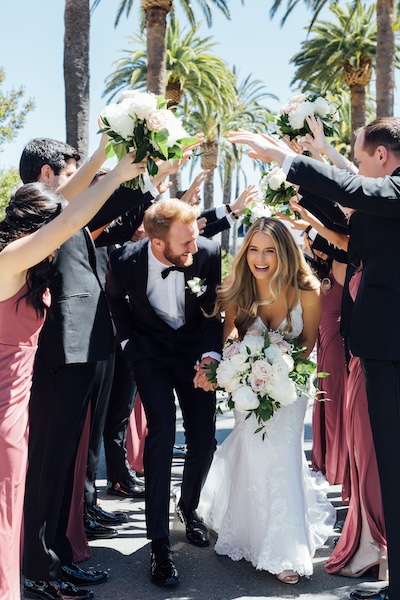News + Features
Ukrainian Photographer Creates Portraits of Hope
May 24, 2022
On the Eastern edge of Ukraine, just 26 miles from Russia, lies the city of Kharkov. It is an industrial and cultural center, the former capital of Ukraine, and until recently, it was home to 1.4 million people, including award-winning Ukrainian photographer Alexandra Bolotina. Here is her story of how she and her fellow Ukrainians have coped as the war with Russia rages on, and how her idea to create glamour portraits of those involved in the war effort has provided them with hope and peace, even if just for a little while.
When the Russian attack against Kharkov began on Thursday, February 24, heavy shelling and rocket fire exploded across Kharkov. As Bolotina recalls, “For three months, the city fought to the death for its life. The first round of bombing was intense. Walls were vibrating, bombs were falling once every three minutes . . . at some moments, it felt as though there would be nothing left outside at all.”


Bolotina, her husband, her elderly parents and nine pets—four who were theirs before the Russian invasion began and five who they found abandoned and took in—all left the city center to shelter in a relative’s home. They crowded together in a tiny basement room to increase their chances of surviving the attack.
[Read: How Photo Industry Companies are Helping as the War in Ukraine Rages On]
The bombing took out the city’s power in the depths of winter. With no lights, they lived in darkness and by candlelight. With broken-out windows and no heat, they wore their winter coats and boots even to bed to stay warm and to be prepared in case they were bombed during the night and had to dig out of the rubble. With no running water, they melted snow to drink. By some mercy, the gas lines were undisturbed, and they were able to cook on the gas stove. After eight days, heroic electricians, working even as the city was being shelled, restored power to the city. After another five days, it was lost and then restored again.
“There, in shelters and basements, we grew into our city even stronger,” says Bolotina. “Hatred for the enemy did not consume us because the light, though weak, conquers darkness.” For those first two months, Bolotina and her family barely left their basement shelter and only stepped outside for 5 minutes at a time. She and her husband made a trek out into the city after three weeks, risking their lives to find food. More than once, they narrowly avoided being struck by rocket fire. Several markets were open. The shopkeepers were living there. They didn’t dare commute from work to home.
After only the first three days of bombing, Bolotina’s friend, soap maker Luba Orechova, who had stayed home instead of going to a shelter because she couldn’t bear to leave her animals behind, decided she had to get out and find a way to help. Orechova set out to find anyone she could who was helping the army. She was ready to do whatever was needed. She found a friend, a business owner, who had funds to purchase medicine and food, and also an abandoned puppy that she adopted. Together, they called shops and warehouses, picked up supplies, packed them up, and made deliveries to people in need—especially the elderly and handicapped who could not go out to find supplies for themselves. With no means of protecting themselves from the shelling, it was dangerous work, but they persevered and were joined by others.


Soon, they needed a larger space and were contacted by Dmitry Lantushko, a young businessman who offered his warehouse and his workers to help with their life-saving mission. Workers called around to markets, and friends from abroad sent supplies. They explored, and continue to explore, every avenue to keep supplies flowing to those in need. People from all walks of life became involved: drivers, businessmen, young mothers, mothers of soldiers, and even school children. Bolotina and her husband joined the effort in mid-March. She brought along her camera and a desire to document the efforts of the volunteers. Bolotina says she wanted, “to keep the history of these trying times, to uplift the mood of these dreadfully tired people, and to share the truth about the war and the people caught in it.”



After a time, Bolotina had the idea to offer her professional craft, glamour portraits, to those involved in the volunteer effort. At first, she thought the idea would be rejected as frivolous, but everyone loved it as a way to lift their spirits and forget about the war, even if only just for a little while. Bolotina found a hairdresser and a makeup artist who volunteered their time, and they began to make portraits of hope, joy, and playfulness that embody a return to happier times. Bolotina says, “It was like a breath of hope and peace for all of us. The sounds of shelling and air raid alerts were behind the walls of my studio, but inside it, we were happy and enjoying every moment of the process!”
[Read: This Portrait Photographer Treats Every Subject Like a Hero]
For Bolotina, this project has given her the feeling that armed only with her camera, she can help bring peace to her country. Sharing these images—the kind, open faces of her people—and their stories has helped her bring in donations to the warehouse from her friends and contacts abroad.
Eighty days into the conflict, as shelling and rocket fire continue, it isn’t nearlyas constant as in the beginning and so Bolotina, her husband, and their rescued pets returned to their apartment in the city center. The warmth and brightness of May, the blooming flowers, and the return of others to the city and outdoor spaces provide welcome sights, smells, and sounds.
Bolotina reflects on the joy of returning to the city…”the joy of warm and bright May days, the aroma of dillies in the tired arms of a grandmother in a noisy market, a mosaic flower bed, lovingly planted by our heroes who defied destruction and fear. Old chattering women, as a symbol of constancy, make themselves comfortable on the benches and start to weave their macrame braids and news. The first babies appear on the swings in the park. We’re dreaming and planning again! We will live, not just survive!”

The conflict may be far from over, but the hearts and souls of the people of Kharkov already plan for peace.

If you would like to follow and support the efforts of Bolotina and her friends at their warehouse in Kharkov, you can follow this link for more information about how you can help.




